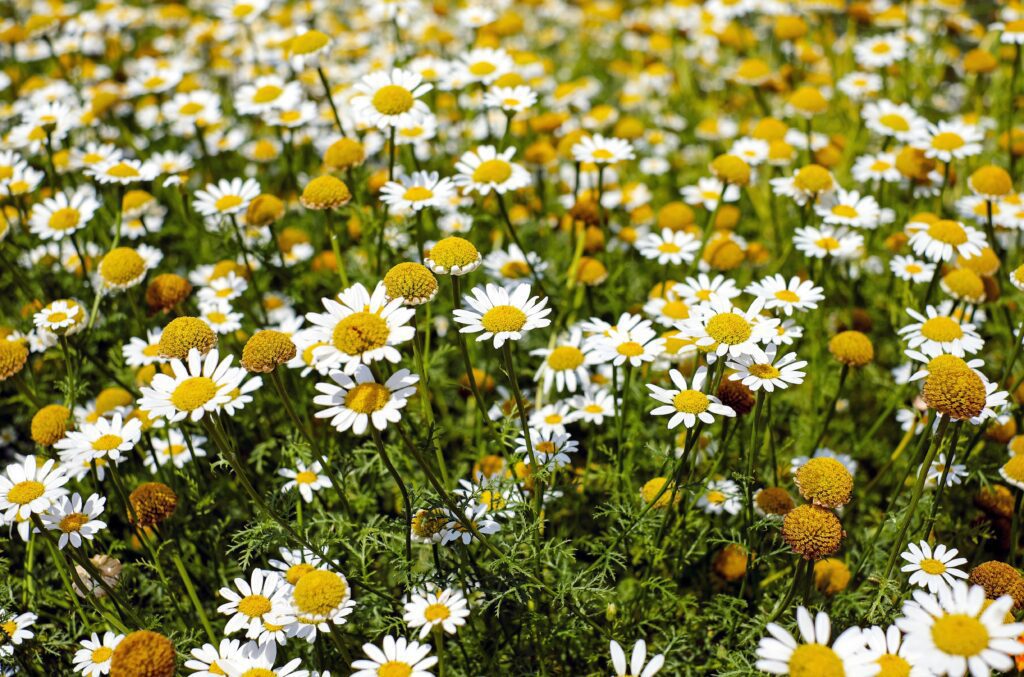
Understanding Organic Gardening
Organic gardening is a sustainable and environmentally friendly way to grow plants without the use of synthetic chemicals, fertilizers, or genetically modified organisms. By choosing to grow organic chamomile, you ensure that you are cultivating a herb that is free from harmful pesticides and herbicides. Organic chamomile is not only safer for consumption but also promotes biodiversity and supports the overall health of your garden.
To start your journey into organic gardening, it’s important to understand the principles behind it. Organic gardening focuses on creating a natural and balanced ecosystem in your garden. This involves enhancing the soil fertility, practicing companion planting, and using natural methods of pest and disease control.
By working with nature rather than against it, you can create a thriving garden that is in harmony with the environment. When it comes to growing chamomile organically, the first step is to choose the right location for your plants.
Choosing The Right Location for Chamomile
German Chamomile plants thrive in full sunlight to partial shade, so it’s important to choose a location in your garden that receives at least 3-6 hours of direct sunlight each day. Roman Chamomile do better in partial shade. The soil should be well-draining, as chamomile does not tolerate wet feet. If your soil is heavy and clayey, consider adding organic matter such as compost or well-rotted manure to improve its drainage and fertility.
Another important factor to consider is the proximity to other plants. Chamomile is known to attract beneficial insects such as bees and butterflies, so planting it near other flowering plants can help promote pollination and biodiversity in your garden. Additionally, chamomile acts as a natural pest repellent for certain insects, making it a great companion plant for vegetables prone to pest infestations. Once you have selected the perfect location, it’s time to prepare the soil for chamomile cultivation.
Preparing The Soil for Chamomile
Before planting chamomile seeds or seedlings, it’s crucial to prepare the soil to provide the best-growing conditions for your plants. Start by removing any weeds or grass from the area where you plan to grow chamomile. This will prevent competition for nutrients and ensure that your chamomile plants have enough space to grow.
Next, loosen the soil by gently tilling it with a garden fork or tiller. Chamomile prefers loose, well-aerated soil, so this step is essential for root development. If your soil is compacted, consider adding organic matter such as compost or aged manure to improve its structure and fertility. Work the organic matter into the soil, ensuring that it is evenly distributed. Once the soil is prepared, it’s time to plant your chamomile seeds or seedlings.
Planting Chamomile Seeds or Seedlings
Chamomile can be grown from seeds or purchased as seedlings from a nursery. If you choose to start from seeds, sow them directly into the prepared soil. Chamomile seeds are tiny, so scatter them thinly across the surface and lightly press them into the soil. Avoid burying the seeds too deep, as chamomile requires light to germinate.
If you opt for seedlings, dig small holes in the prepared soil, spaced about 6-8 inches apart for Gernam chamomile and 18″ for Roman chamomile. Gently remove the seedlings from their containers and place them into the holes. Backfill the holes with soil, ensuring that the seedlings are planted at the same depth as they were in the containers. Firmly press the soil around the base of the seedlings to secure them in place. Once your chamomile plants are in the ground, it’s time to provide them with the care and maintenance they need to thrive.
Caring for Organic Chamomile Plants – Watering, Fertilizing, and Pest Control
Chamomile plants require regular watering to ensure healthy growth. Water your chamomile plants deeply, providing enough moisture to reach the root zone. However, avoid overwatering, as excessive moisture can lead to root rot and other fungal diseases. To determine when to water, check the moisture level of the soil by inserting your finger into the soil up to the second knuckle. If the soil feels dry at this depth, it’s time to water.
Fertilizing chamomile is not usually necessary if you have prepared your soil with organic matter. However, if you notice slow growth or pale leaves, you can apply a balanced organic fertilizer once or twice during the growing season. Follow the package instructions for the recommended application rate and frequency.
One of the advantages of growing chamomile organically is that it naturally repels certain pests. You can even make a strong infusion of chamomile and water to spray other plants to help rid of pests! However, if you encounter pest problems, there are several natural methods you can use to control them.
For example, aphids can be removed by spraying the plants with a strong stream of water or by applying insecticidal soap. Slugs and snails can be deterred by placing copper tape around the base of the plants or setting beer traps. Additionally, planting chamomile near other pest-repellent plants such as marigolds or lavender can help keep pests at bay.
Harvesting Chamomile Flowers
The true beauty of growing chamomile lies in the delicate white flowers that bloom on the plants. Harvest the flowers just before they fully open. Use clean, sharp scissors to cut the flowers just above the foliage. Avoid harvesting more than one-third of the flowers at a time, as this can weaken the plants and affect their overall health.
Chamomile flowers can be used fresh or dried for various purposes, so let’s explore the different ways you can utilize your harvest your homegrown organic chamomile flowers!
Drying and Storing Chamomile
Drying chamomile flowers is the most common method of preserving their fragrance and medicinal properties. To dry chamomile, spread the flowers in a single layer on a clean, dry surface such as a drying rack or a clean towel. Place them in a well-ventilated area away from direct sunlight and moisture. Allow the flowers to dry completely, which usually takes about 1-2 weeks. Once dry, store them in an airtight container away from light and heat to maintain their quality.
Uses of Chamomile – Tea, Skincare, and Medicinal Purposes
Chamomile has been used for centuries for its numerous health benefits and soothing properties. One of the most popular uses of chamomile is in tea. To make chamomile tea, steep a few dried chamomile flowers in hot water for 5-10 minutes. The resulting infusion is a fragrant and calming beverage that can help promote relaxation and sleep.
In addition to tea, chamomile can be used in skincare products such as creams, lotions, and soaps. Its anti-inflammatory and antioxidant properties make it a popular ingredient for soothing irritated skin, reducing redness, and promoting overall skin health.
Chamomile also has a long history of medicinal use. It has been traditionally used to treat digestive disorders, menstrual cramps, and anxiety. However, it’s important to consult with a healthcare professional before using chamomile for medicinal purposes, especially if you have any underlying health conditions or are taking medications.
Final Tips For Successful Chamomile Cultivation
Growing chamomile organically is a fulfilling and rewarding experience that allows you to enjoy the benefits of this versatile herb. By understanding the principles of organic gardening, choosing the right location, and providing the necessary care, you can cultivate healthy organic chamomile plants that will provide you with an abundance of fragrant flowers.
Remember to water your chamomile plants regularly, avoid over-fertilizing, and implement natural pest control methods if needed. Harvest the flowers when they are almost fully open and dry them for future use in tea, skincare, or home remedies.
As you embark on your journey to becoming a successful chamomile gardener, keep in mind that gardening is a continuous learning process. Observe your plants, experiment with different techniques, and don’t be afraid to ask for advice from experienced gardeners. With time and patience, you’ll develop your own green thumb and enjoy the many benefits of growing chamomile organically. Happy gardening!

